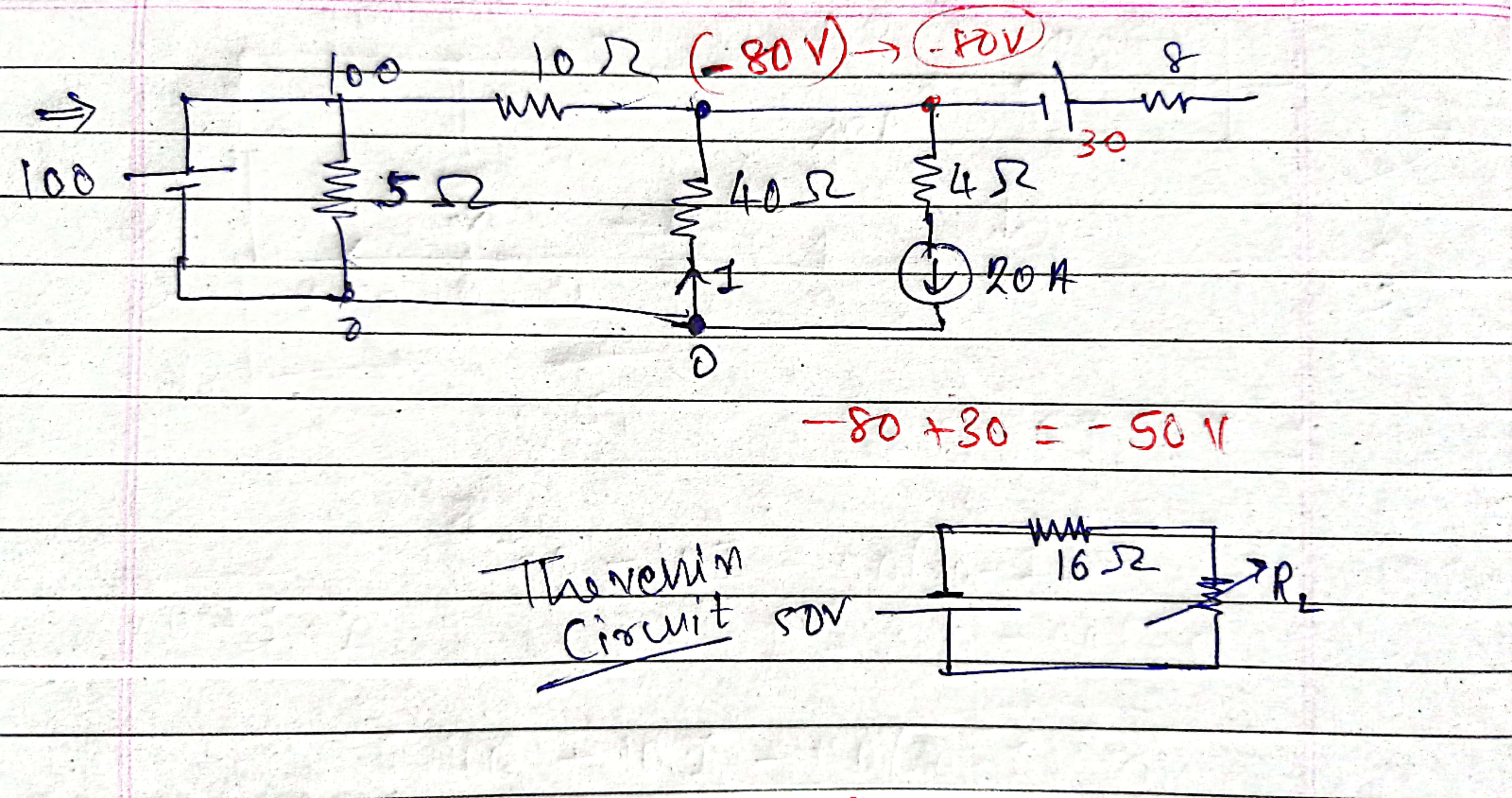Consider this Circuit which is to be converted to Equivalent Thevenin's Circuit.
Now I tried Solving this using two methods and got contradictory result. We need $V_{Th}$ and $R_{Th}$
$$R_{Th}= 8\Omega + 8\Omega = 16\Omega$$
Now Finding $V_{Th}$: -
Method -$1$: - The current in $R_7$ branch is $20A$ and hence Voltage drop across the terminals $CD=$ $20A\times4\Omega = 80V$ and the direction of current points to fact that $V_C=80V$ and $V_D=0V$. Hence $V_{Th}=80+30=110V$
Thevenin's Circuit
Method -$2$ : - Using Circuit Laws (like KVL/KCL/Superposition) to solve the circuit when Load is open to get $V_{Th}$
Solution

You can see that the polarity of the $V_{Th}$ is coming opposite in both. Why?



